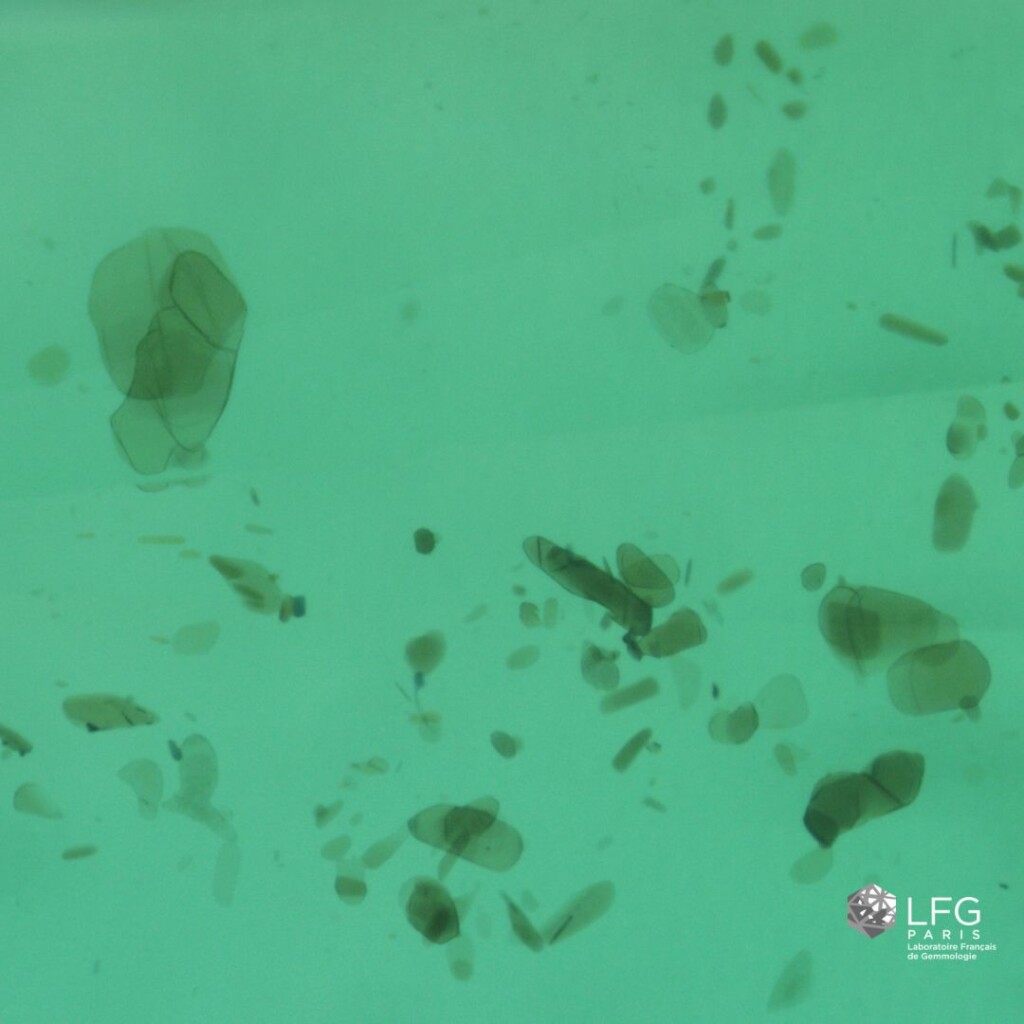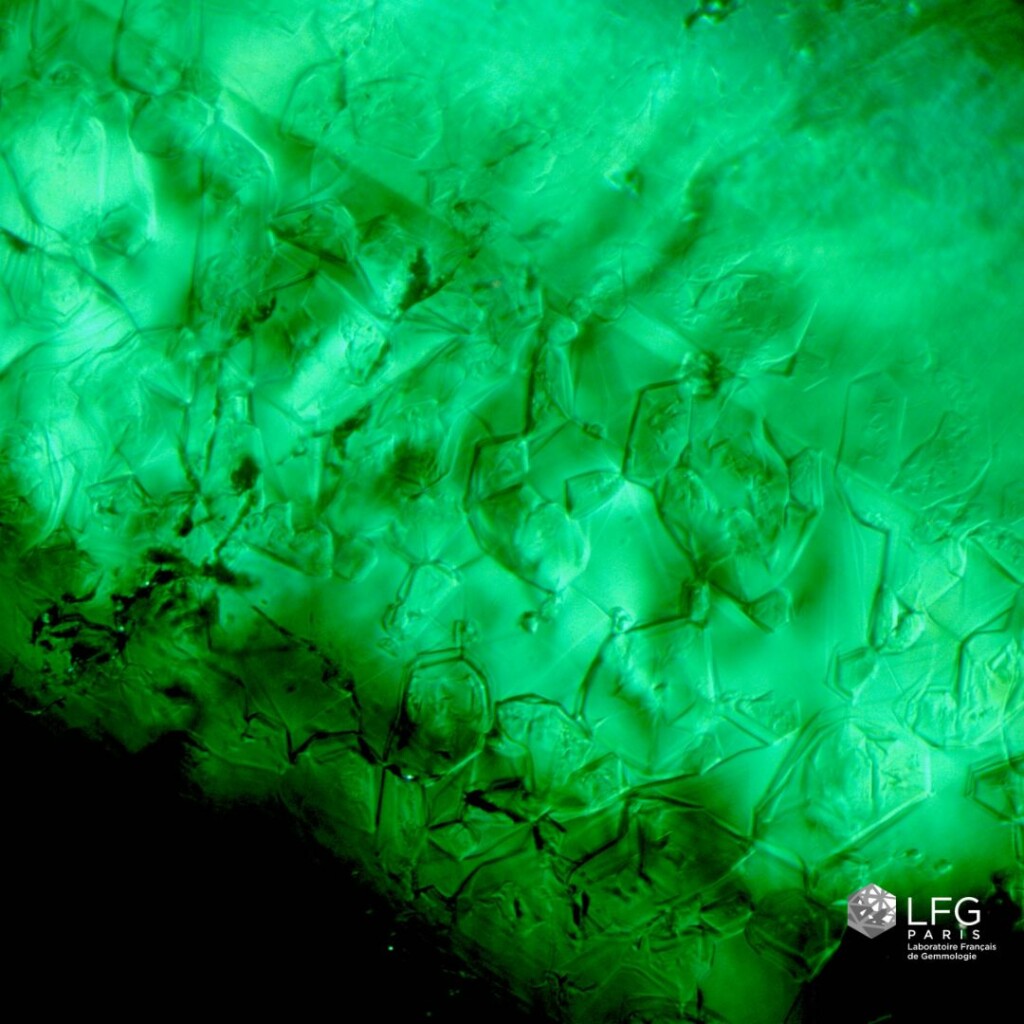Chemical characteristics and inclusions are key indicators of the geological and geographical environment in which the stones were formed.
Colombian emeralds, mainly from the Muzo, Chivor and Coscuez deposits, are rich in vanadium and chromium, giving this beryl its distinctive and highly sought-after bright, saturated green colour. Their hydrothermal formation in black schists produces typical inclusions, notably three-phase fluid inclusions (liquid, gas and crystal – photo no2) or crystalline inclusions (albites, pyrite, calcite), or the ‘Gota de Aceite’ effect (photo no.3).
Zambian emeralds, extracted in particular from deposits in the Kafubu region, come from metamorphic formations linked to the intrusion of pegmatitic rocks. Their chemical composition has a higher iron content than Colombian emeralds, which explains their darker, bluish-green hue. Zambian emeralds also show biphasic fluid inclusions, or inclusions of crystals such as amphiboles, ilmenite or micas (photo no.4).
At the Laboratory, observation of the inclusions combined with spectroscopic (FTIR, UV-Vis-NIR absorption) and chemical analysis (EDXRF) make it possible to differentiate geographical origins.




